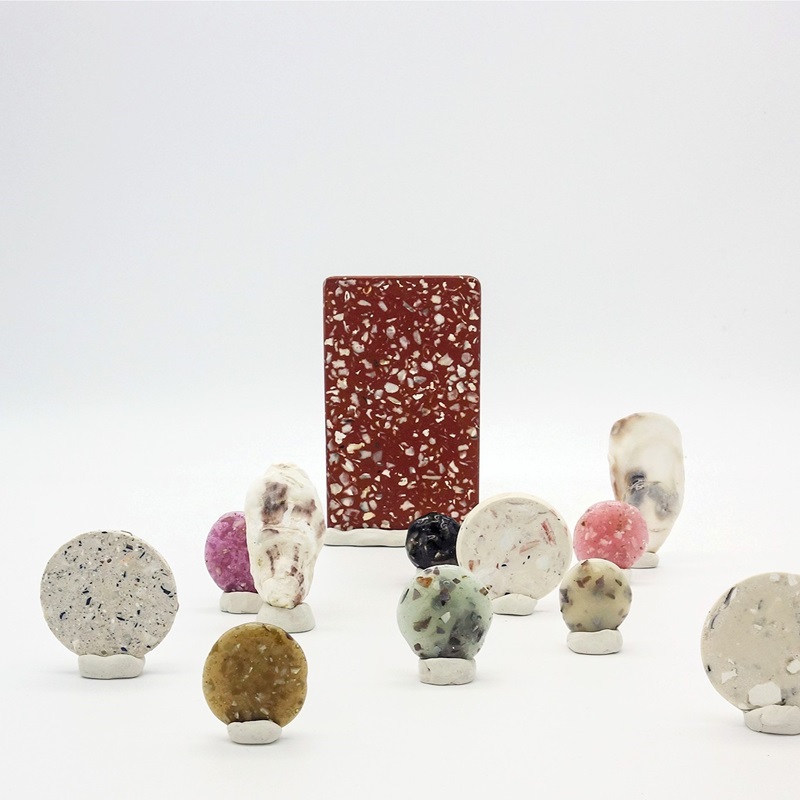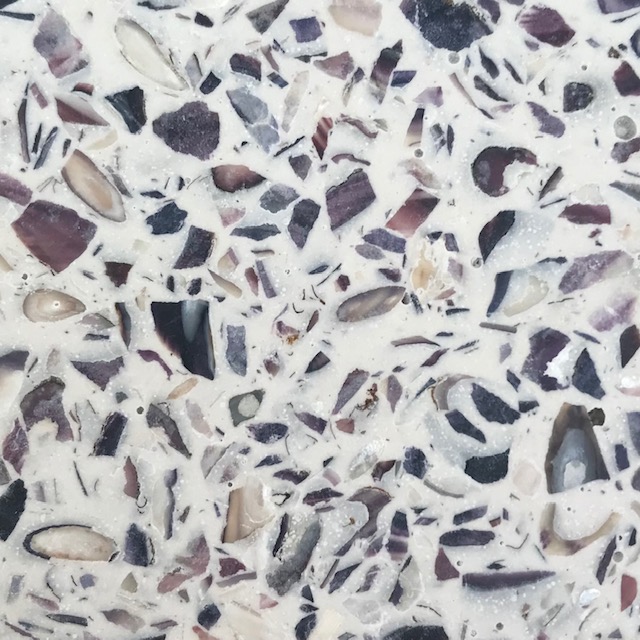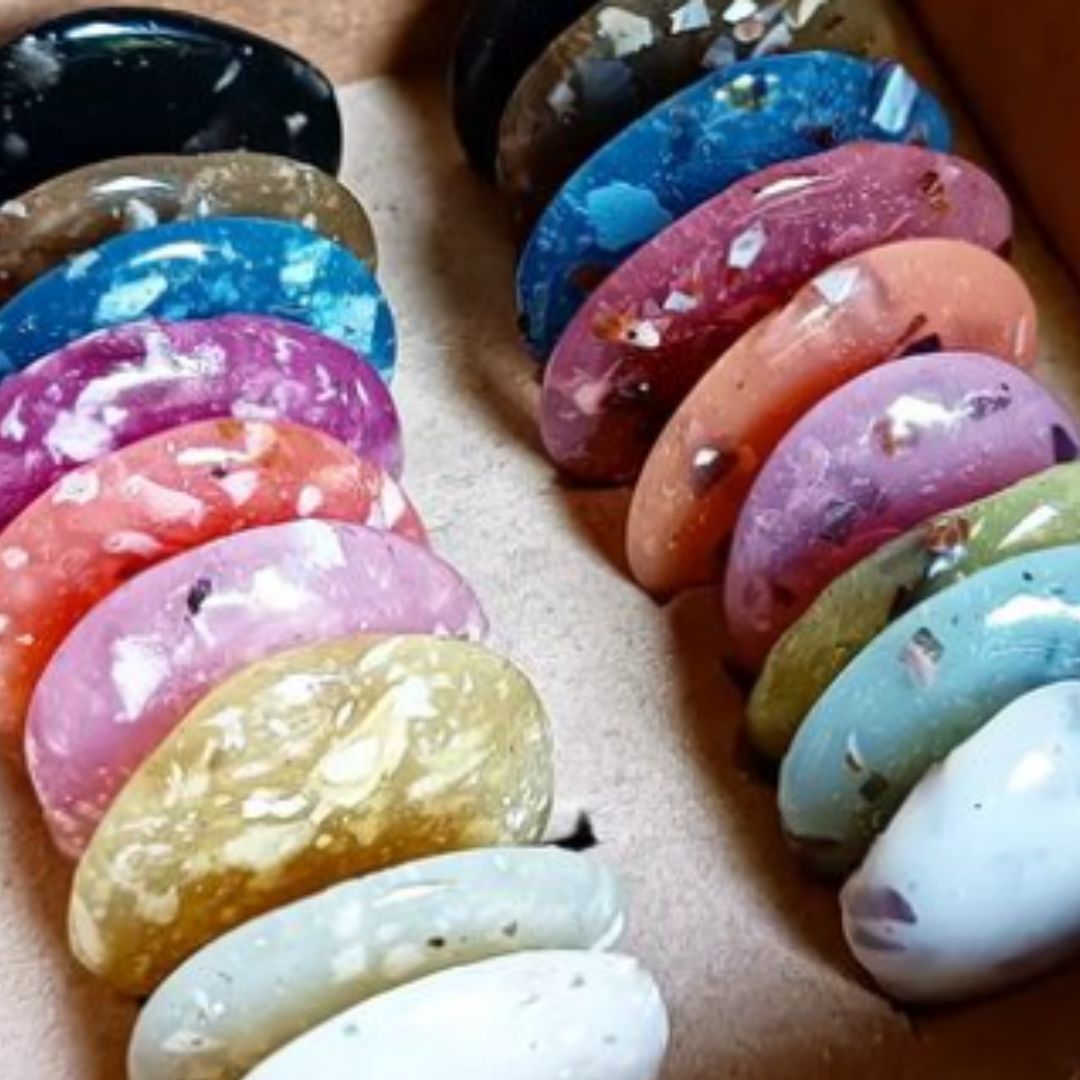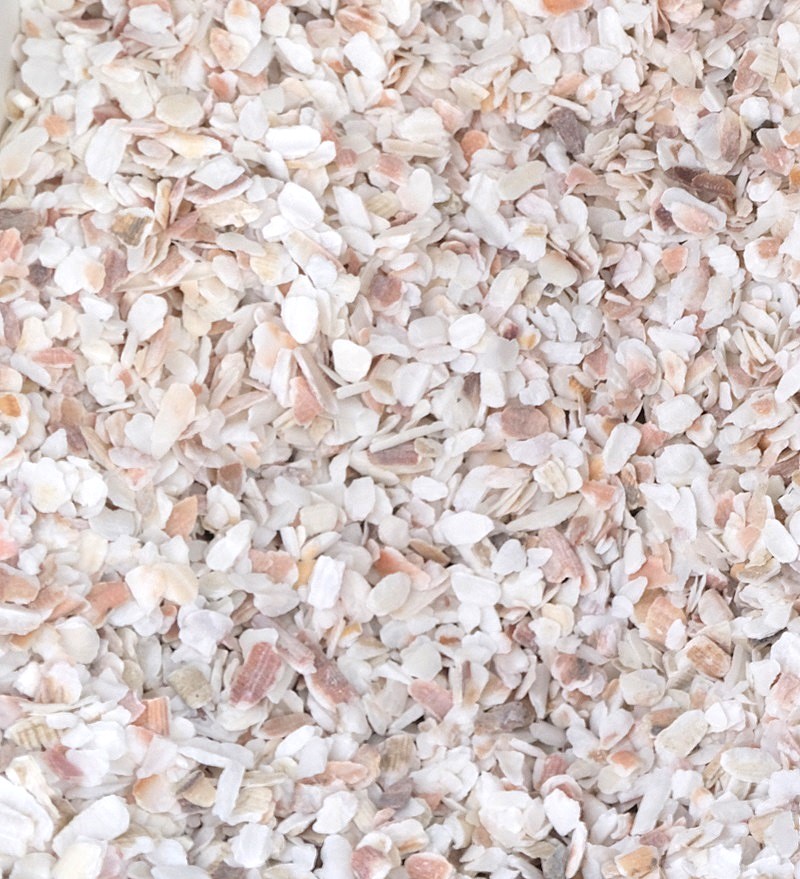Shellfish composites and biocomposites
part 2
part 2





In this second part, we focus on shells used as decorations in materials inspired by the famous terrazzo.
In recent years, several companies on the French west coast have been developing mineral materials containing around 65% recycled shell fragments.
The three main shellfish eaten in France are white oysters, blue mussels and pink scallops, but abalone, prized for its mother-of-pearl, can also be used.
The shell pieces are bonded by a water-based mineral matrix, the composition of which varies according to manufacturer and use. What they all have in common is cold casting or molding, followed by a few days' drying.
The shell fragments are revealed after sanding, giving the material a lustrous appearance and a mineral touch.
The clear matrix can easily be colored, the shells more or less crushed, mixed, and a varied palette of renderings and colors obtained.
While some manufacturers focus mainly on making panels for flooring or fixtures, we work with partners capable of molding fine, complex pieces, such as our Geom vases or Diptyque object collections, particularly the mirror, which is particularly technical. Our production capacity is several hundred pieces a week for small items such as those made for Diptyque.
An original, slightly different approach, based on biopolymer of plant origin and biodegradable, which is worked by hand like a glass paste, with numerous shaping possibilities: here, oyster or mussel shells are added in part to create a unique rendering.
The biopolymer is tinted to produce a wide range of attractive translucent colors.